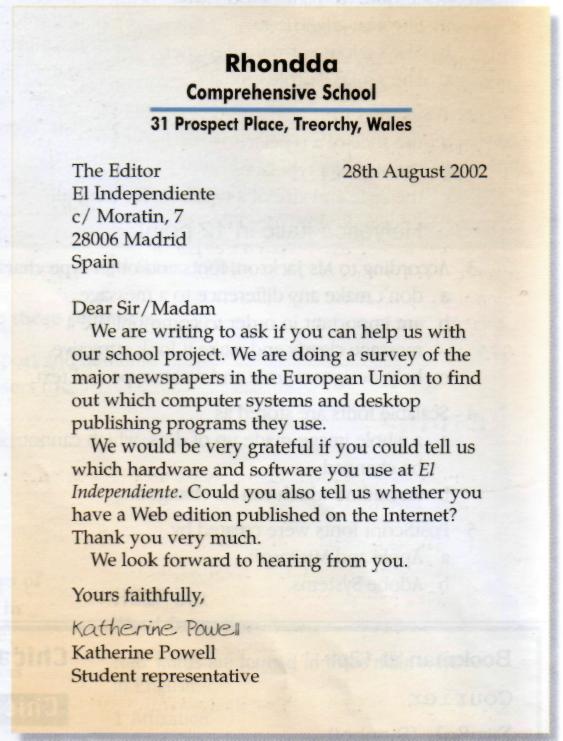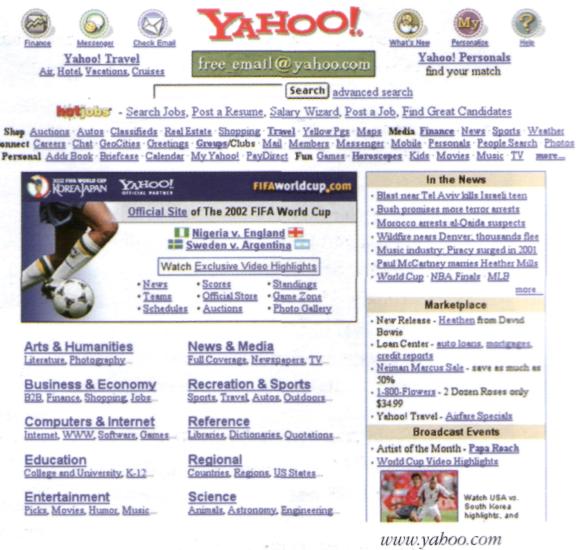
- •Unit 11
- •I. Reading: Computer Graphics
- •1. Answer the questions.
- •2. Read through the text and find the answers to these questions.
- •II. Listening
- •1. Read the passage below and complete it. The first letters of the missing words are given as a prompt for you.
- •2. Listen and check your answers.
- •III. Vocabulary
- •1. Look at the functions represented by the icons in the tool palette on the right and match them with the definitions on the left.
- •3. Look at the pictures and label them with the facility that has been used to change the original.
- •IV. Grammar: Gerunds
- •1. Study the following information:
- •2. Read the passage below. Find the gerunds and decide whether they function as the subject, the subject complement, the object of a verb, or the object of a preposition.
- •3. Complete the sentences by using an appropriate gerund from those in the box.
- •V. Reading: Desktop Publishing
- •1. Read the text.
- •VII. Listening
- •1. Listen to this radio interview with Rob Jackson about the importance of fonts and typography in desktop publishing and choose the correct answer.
- •Unit 12
- •3. Find the right abbreviation for each sentence.
- •4. Choose the correct word.
- •II. Grammar: Modal verbs
- •1. Study the following information:
- •2. Complete the sentences using can, could, may, might, should, can't, must.
- •2. Read the texts again and correct these statements.
- •3. Match these terms in the box with the explanations.
- •VII. Grammar: Conditional Clauses
- •1. Study the following information:
VII. Listening
1. Listen to this radio interview with Rob Jackson about the importance of fonts and typography in desktop publishing and choose the correct answer.
1 1. What does Ms Jackson do? a She's an advertiser. b She's a font software designer. c She's a DTP professional.
|
2. Fonts refer to a the style of a typeface. b the size of a typeface. c the style and size of a typeface, for example: Helvetica italic in 12 point. |
3 3. According to Ms Jackson, fonts and other type characteristics a don't make any difference to a message. b are important in order to communicate a message clearly and make it look attractive. c help designers scale and rotate type and text. |
4. Scalable fonts are stored as a a whole image made up of dots, which cannot be changed. b an outline which can be changed.
5. PostScript fonts were created by a Apple and Microsoft. b Adobe Systems. |
VIII. Writing
1 .
The letter below is from a group of students asking for information
about the hardware and publishing software used by the newspaper El
Independiente.
.
The letter below is from a group of students asking for information
about the hardware and publishing software used by the newspaper El
Independiente.
Read it and note:
the form and position of the addresses
the polite forms of asking for cooperation:
We would be very grateful if you could...
Could you also ...
• the ways in which the letter begins and ends.
2. Write a letter to the Morning News asking for information about the hardware and page-layout software used in its production. Use this letter to help you.
Unit 12
I. Reading: Creating web pages
1. Look at the homepage of Yahoo and try to answer these questions.
Why do people create and publish web pages?
What does a website consist of?
What is a homepage? What is an Internet portal?
Y ou
can use a search engine like Yahoo to find
information. It also acts as a web portal offering
services such as e-mail, forums, on-line
shopping and links to other sites. Specialist
portals are related to particular subjects
such as music, sports or news.
ou
can use a search engine like Yahoo to find
information. It also acts as a web portal offering
services such as e-mail, forums, on-line
shopping and links to other sites. Specialist
portals are related to particular subjects
such as music, sports or news.
2. Read the text and summarize it in Ukrainian.
If you can write and send e-mail, you can create a website on the Internet. Many web-hosting companies offer software tools that help you to build a site, such as WYSIWIG editor. You can even choose a template complete with images and start posting content in just a few minutes – and often for free!
But if you create your company website using the above tools, you might seem like an amateur. Looking professional starts with the site’s URL. A company website should have its own domain, which usually includes some form of the firm’s name.
Companies can pay an Internet service provider (ISP), or the web hosting company to register a domain name. Such firms can host the website by providing the hardware, such as a dedicated server, and often the software. The costs usually depend on the type of site and the amount of storage space and traffic. If your site has a lot of visitors, you may have to pay for extra bandwidth.
Another alternative is for a company to hire its own web developer to take care of the front end of a site, it other words, what the users see and use, and an IT specialist to program the back end, which is the server side of the website. Using free, open-source software will keep costs down. Once the site is online, a good content management system (CMS) should require little or no knowledge of programming or scripting to change and update the content. If you are selling products or services over the Internet, your site will need security technology, such as Secure Sockets Layer (SSL), for exchanging payment details between the server and website.
Today, web designers worry less about the size of the homepage, because dial-up connections are less common. Broadband services such as Digital Subscriber Line (DSL) technologies offer faster access to the Internet, and web pages load much more quickly. Streaming audio or video content, as well as downloading or uploading large files, is rarely a problem.
The Web 2.0 trend has seen a rapid increase in user-generated content, such as blogs, podcasts and videos, on many sites. With the help of a web feed format, such as Really Simple Syndication (RSS), users can receive podcasts or other content automatically. A news aggregator, also called feed reader, allows users to get updates from different sites without having to visit them. If you need page impressions for advertising, you may decide against such feeds. Or you may find another way to make money with your site.
Is there a negative side to such developments? Some industry analysts say that growing traffic may slow down the Internet by 2011. Other Internet experts are less worried. Speaking to the BBC, British scientist Tim Berners-Lee, widely recognized as the creator of the Web, was confident that computer scientists “are going to look at new technologies and completely new ideas” to improve the Web.
Bandwidth – пропускна спроможність Broadband - широкополосний CMS – система управління контентом Dedicated server – виділений сервер Feed - подача To host – хостити\розміщувати вебсайт ISP – провайдер інтернет послуг Open- source software – програмне забезпечення з відкритим вихідним кодом
|
News aggregator – програма для підписки і читання RSS новин Page impression – показ сторінки Podcast – звуковий файл RSS – формат для абонування контенту SSL – протокол безпечних з'єднань Template - шаблон User-generated – згенерований користувачем Web 2.0 – організований користувачем контент |
|
|
